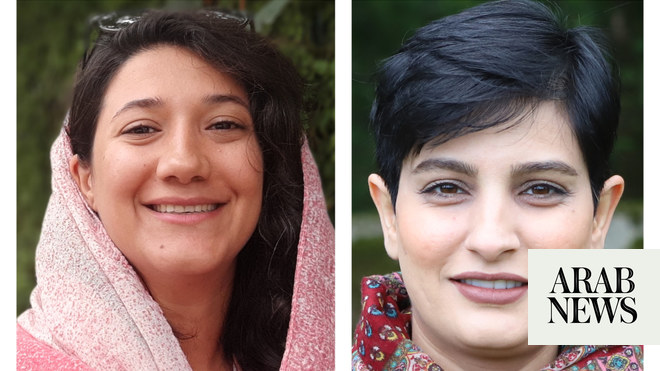RIYADH: Just as Walt Disney founded one of the world’s largest and most influential entertainment conglomerates, an Egyptian journalist is being hailed as the “Walt Disney of the UAE” for his pivotal role in shaping the region’s media landscape with Majid Magazine.
For many Arab adults now in their 50s, the magazine and its beloved characters, such as Majid, Kaslan Jiddan and Captain Khalfan, are cherished symbols of childhood joy. Yet few recognize the creative genius behind these precious memories: Ahmed Omar, who passed away on August 9 at the age of 85.
His vision and storytelling ability were instrumental in shaping the magazine's enduring legacy.
Born in Egypt in September 1939, Omar has embarked on a lifelong journey of words and stories.
His passion for reading blossomed at a young age and school and public libraries became his refuges, where he immersed himself in a world of different books and cultivated a deep love for literature.
Omar's frequent visits to Cairo's Azbakeya Book Market, where he discovered affordable second-hand books, helped him build a personal library filled with diverse titles. His extensive reading played a crucial role in shaping his vision and enriching his ideas, which later shine through in his literary works.
He read to build a deep reservoir of knowledge, with classical literature captivating him from an early age. Naguib Mahfouz’s novels, which delve into the intricacies of life in Egyptian neighborhoods, had a profound impact on him. Omar was also shaped by the works of renowned Egyptian writers such as Yusuf Idris, Gamal El-Ghitani, Mohamed Hassanein Heikal, and other prominent authors.
He began his professional career at the UAE’s Al-Etihad newspaper, where he was a founding member and helped lay its foundations. He later managed the local news section.
The most significant achievement of his career was the founding of the children's magazine Majid Magazine and his appointment as editor-in-chief in 1979. The idea for the magazine originated within the daily newspaper Al-Etihad and eventually grew into one of the most important children's magazines in the Arab world.
Omar recognized the need of Arab children to have a publication that would represent them, stimulate their imaginations and nourish their minds. Working with a talented team of journalists and illustrators, he transformed the magazine into a platform for Arab children to express their thoughts and emotions through words and drawings.
Thanks to his tireless commitment, Omar made the magazine a symbol of Arab childhood and a precious piece of memories for subsequent generations.
He spent most of his time in the magazine offices, creating, planning, supervising writers and content, and preparing issues. When a new issue was printed, he would have the issue ready several weeks in advance.
The magazine’s inaugural issue was published on February 28, 1979, with 5,000 free copies that quickly disappeared from the shelves. Majid, a character who represented human values rather than superpowers, struck a chord with children. Majid Magazine maintained a weekly publication schedule every Wednesday without fail, gaining considerable popularity across the region.
Omar supervised and managed the magazine with the utmost care and interest for nearly 30 years. He provided guide articles for children and wrote scripts for comic strip stories, enriching each issue with beloved characters such as Zaki the Clever and Captain Khalfan, among others.
His editorials in Majid Magazine served as weekly lessons for both children and adults, filled with educational messages and moral guidance. His contributions established him as a pioneer in education, as he dedicated his knowledge to serving the younger generation and teaching valuable lessons.
Thanks to his deep understanding of the nuances and secrets of childhood, Omar has managed to capture the attention of children throughout the Arab world. The magazine's audience has grown to hundreds of thousands of young readers.
The late journalist believed that cultivating a love of reading in children was the collective duty of families, schools, and magazines. He famously said, “Inculcating the habit of reading at an early age is essential, as it is difficult to cultivate it later. Introducing a magazine to a child is not just providing entertainment, it is a vital step in cultivating a lifelong passion for reading.”
From the magazine’s inception, Omar was committed to infusing it with a distinctly Gulf Arab flavor, reflected in its content, stories, and characters. He attracted leading children’s writers and cartoonists, ensuring that the magazine resonated deeply with young readers across the Arab world, preserving the unique identity of Gulf children.
Famous figures such as Kaslan Jiddan, Fadooli, Abu Al-Dhurfaa, Zakiyah Al-Zakiyah, Shamsa and Dana, as well as Captain Khalfan and his assistant Fahman, became beloved figures among the magazine's young audience.
Omar stressed that his magazine was designed to appeal to children growing up in a traditional environment, instilling religious values, cultural awareness and pride in their Arab heritage.
As a testament to the success of his magazine, Majid’s mail order subscriptions flourished throughout the Arab world, with fans eagerly awaiting each issue every Wednesday. For decades, he managed to compete with translated comics magazines such as Mickey (licensed by Disney and translated in Egypt) and Little Lulu (licensed and translated in Lebanon).
As a result, the magazine has evolved alongside the UAE’s social progress and has embraced digital advances with a YouTube channel and website, although critics argue that it is no longer as influential today, despite the increased reach afforded by modern technology, as it was in the 1990s and 1980s.
